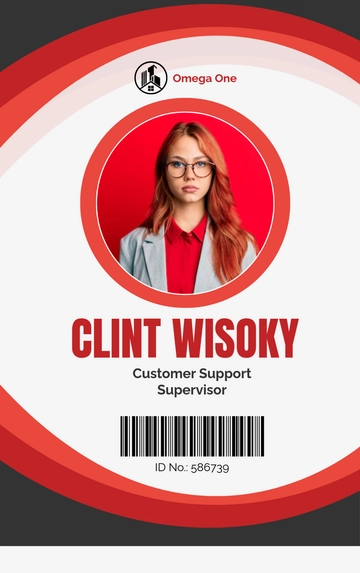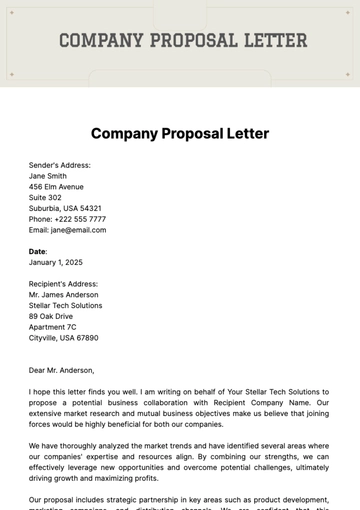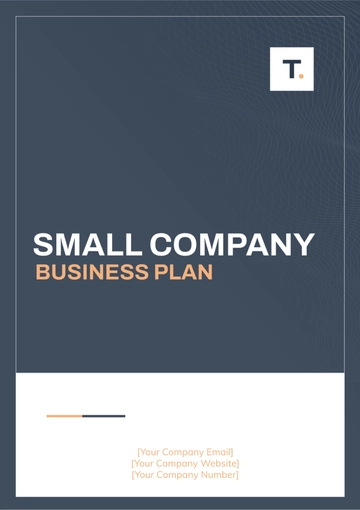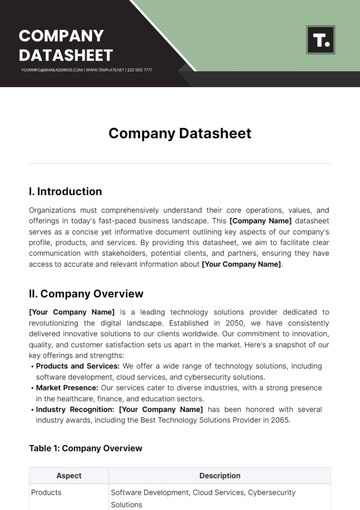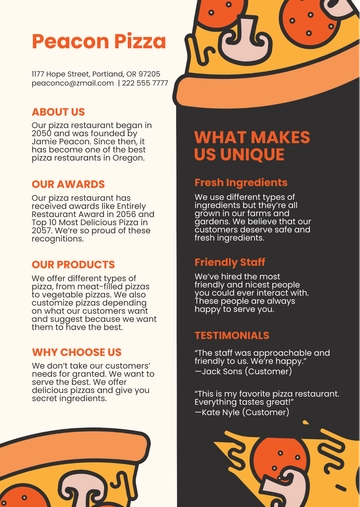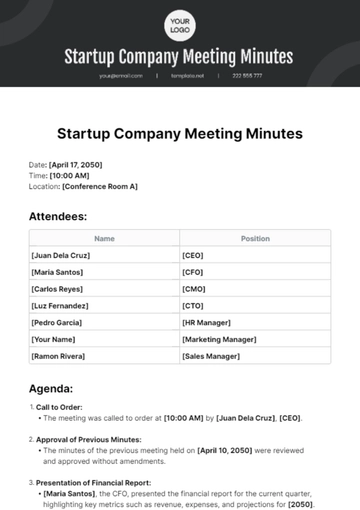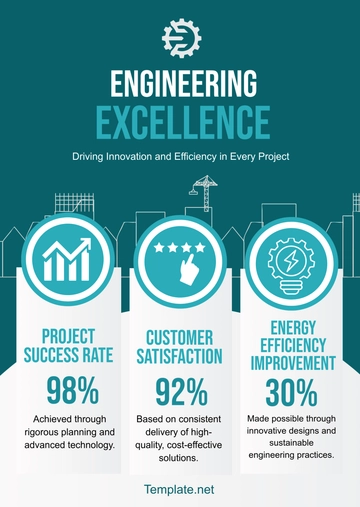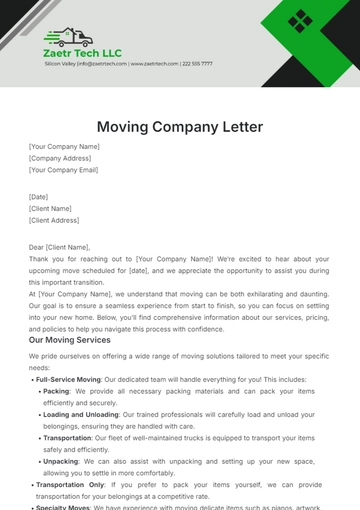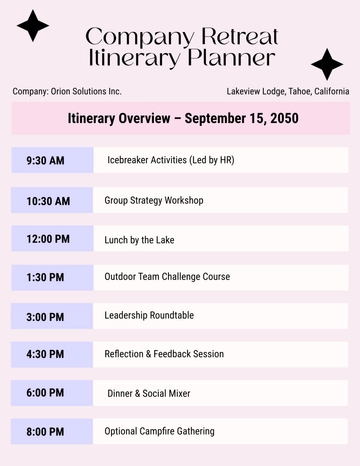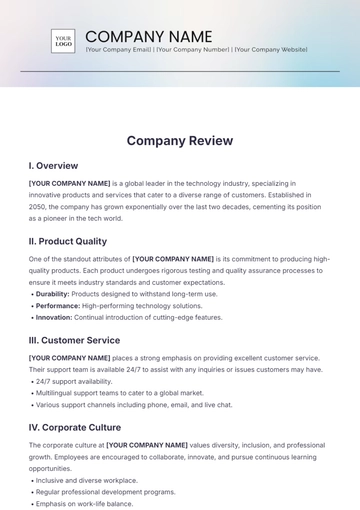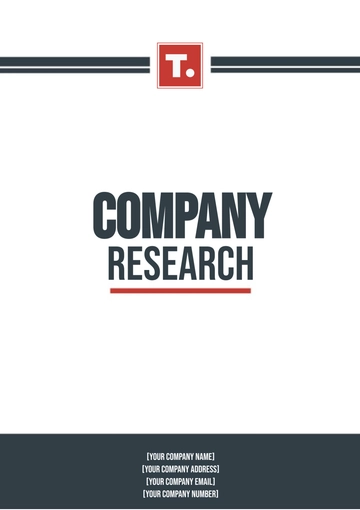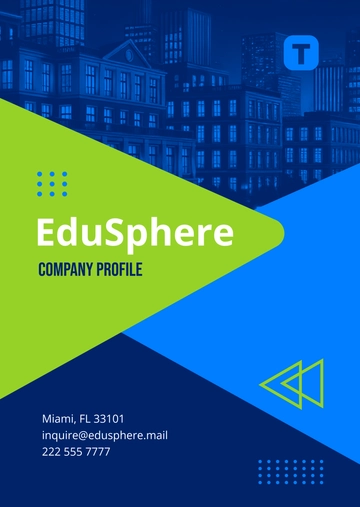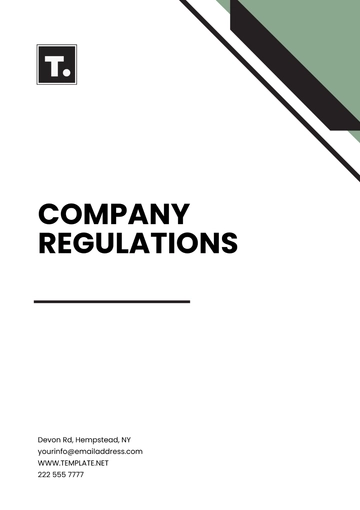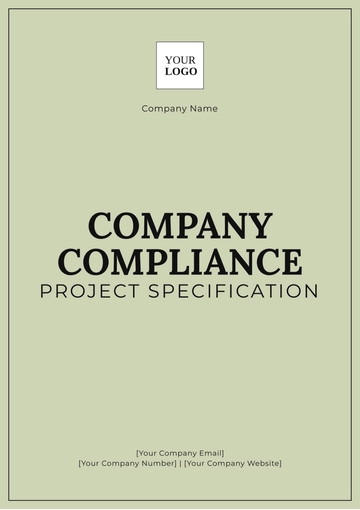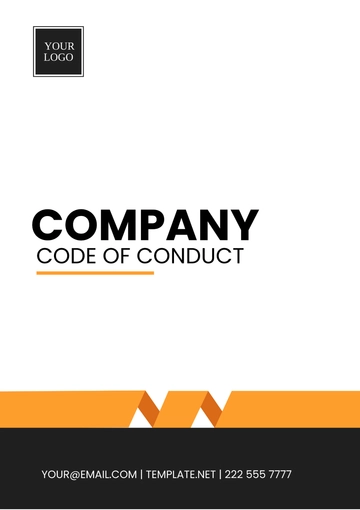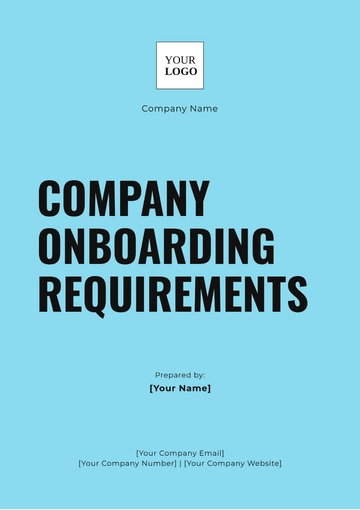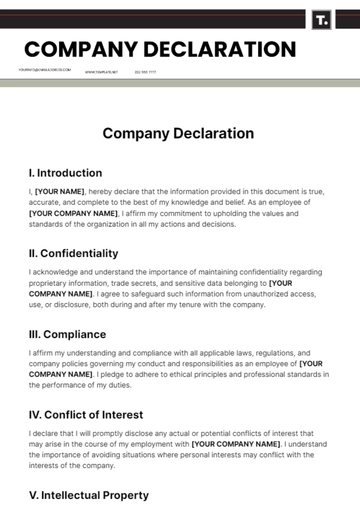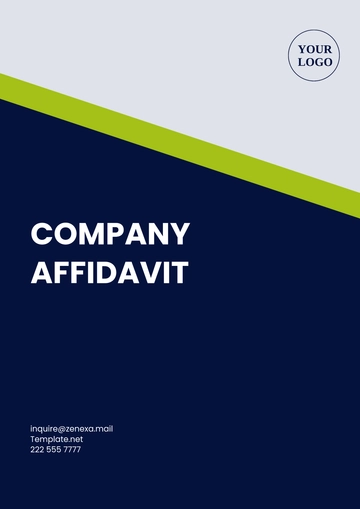Company Onboarding Requirements
1. Introduction
This document outlines the comprehensive onboarding process for new employees at [Your Company Name]. The onboarding process is essential for integrating new hires into the company’s culture, operations, and work environment. By providing a structured and informative onboarding experience, we aim to ensure that new employees are well-prepared, confident, and aligned with the company's values and objectives from day one.
2. Pre-Employment Phase
2.1. Offer Letter
Once a candidate has been selected for employment, they will receive a formal offer letter. This letter serves as a formal invitation to join [Your Company Name] and includes:
Job Title: Specifies the exact position that the candidate is being offered, which outlines their role and responsibilities within the organization.
Starting Date: The date on which the candidate is expected to commence their employment, allowing them to plan their transition into the new role.
Salary: A detailed breakdown of the compensation package, including the base salary, any applicable bonuses, and benefits such as health insurance, retirement plans, and other perks.
Employment Terms: Comprehensive details about the terms of employment, including work hours, job expectations, and any probationary periods or contractual obligations that the employee must adhere to.
2.2. Pre-employment Verification
Before the new employee’s official start date, several verification processes must be completed to ensure that all aspects of the candidate’s background and qualifications are accurate and meet the company’s standards:
Background Check: A thorough review of the candidate’s criminal record, financial history, and other personal details to assess their suitability for the role and ensure there are no potential risks.
Reference Check: Contacting previous employers or professional references to verify the candidate’s work history, job performance, and overall conduct in past roles.
Academic Verification: Confirming the educational qualifications listed by the candidate, including degrees, certifications, and other relevant academic achievements to ensure they meet the job requirements.
3. Employment Onboarding
3.1. Documentation
Upon joining [Your Company Name], new employees are required to complete and submit several important documents to facilitate their integration into the company’s systems and processes:
Employee Information Form: A form that collects essential personal details, including contact information, emergency contacts, and any other relevant data needed for HR purposes.
Bank Details: Information required to set up direct deposit for salary payments, ensuring timely and accurate payment of wages.
Tax Forms: Documents required for tax reporting and withholding, which are necessary for compliance with federal and state tax regulations.
Non-Disclosure Agreement (NDA): A legal document that ensures the employee agrees to maintain the confidentiality of the company’s sensitive information and intellectual property.
3.2. Equipment Allocation
On their first day, new employees will be provided with the necessary equipment and resources to perform their job effectively:
Laptop/Computer: A company-issued device equipped with the required software and tools necessary for the employee’s role.
Company Email Account: An official email address set up for internal and external communications, providing access to company networks and correspondence.
Identification Badge: A badge that allows secure access to the company’s premises and serves as an identification tool for security and administrative purposes.
Necessary Software Access: Access to the specific software applications and tools needed for the employee’s role, including any licenses or permissions required.
3.3. Orientation Program
New employees will participate in an orientation program designed to introduce them to [Your Company Name] and prepare them for their new role:
Company Overview: A presentation or session that covers the history, mission, vision, values, and organizational structure of [Your Company Name], providing context about the company’s goals and how the employee’s role fits into the larger picture.
HR Policies and Benefits: Detailed information about company policies, procedures, and employee benefits, including health insurance, retirement plans, leave policies, and other workplace benefits.
Job-specific Training: Training sessions tailored to the employee’s specific role, focusing on job responsibilities, key tasks, and best practices to ensure they are equipped to perform their duties effectively.
Health and Safety Regulations: An overview of the company’s health and safety protocols, including emergency procedures, safety practices, and guidelines to ensure a safe working environment.
4. Post-Onboarding Integration
4.1. Probation Period
New employees will undergo a probationary period lasting three months, during which their performance and fit within the company will be assessed:
Performance Assessment: Regular evaluations of the employee’s performance, including their progress on assigned tasks, achievement of goals, and overall contribution to the team.
Feedback Sessions: Scheduled meetings between the employee and their manager or supervisor to provide constructive feedback, discuss any challenges, and identify areas for improvement.
KPI Achievement: Employees are expected to meet pre-defined Key Performance Indicators (KPIs) that measure their effectiveness and success in their role. These KPIs are set based on the employee’s job responsibilities and objectives.
4.2. Mentorship Program
To support new hires in their transition, they will be assigned a mentor who will provide guidance and support:
Role-specific Guidance: Personalized assistance to help the employee navigate their job responsibilities, overcome challenges, and achieve their goals.
Company Culture Acclimatization: Support in understanding and adapting to [Your Company Name] culture, values, and social dynamics to ensure the employee feels integrated and engaged.
Career Development Advice: Guidance on career growth opportunities within the company, including skill development, advancement prospects, and long-term professional goals.
5. Conclusion
The onboarding process at [Your Company Name] is designed to provide a thorough and supportive transition for new employees. By following these requirements, new hires will be well-integrated into the company, equipped with the necessary tools and knowledge, and prepared to contribute effectively to the company’s success.
Requirements Templates @ Template.net



